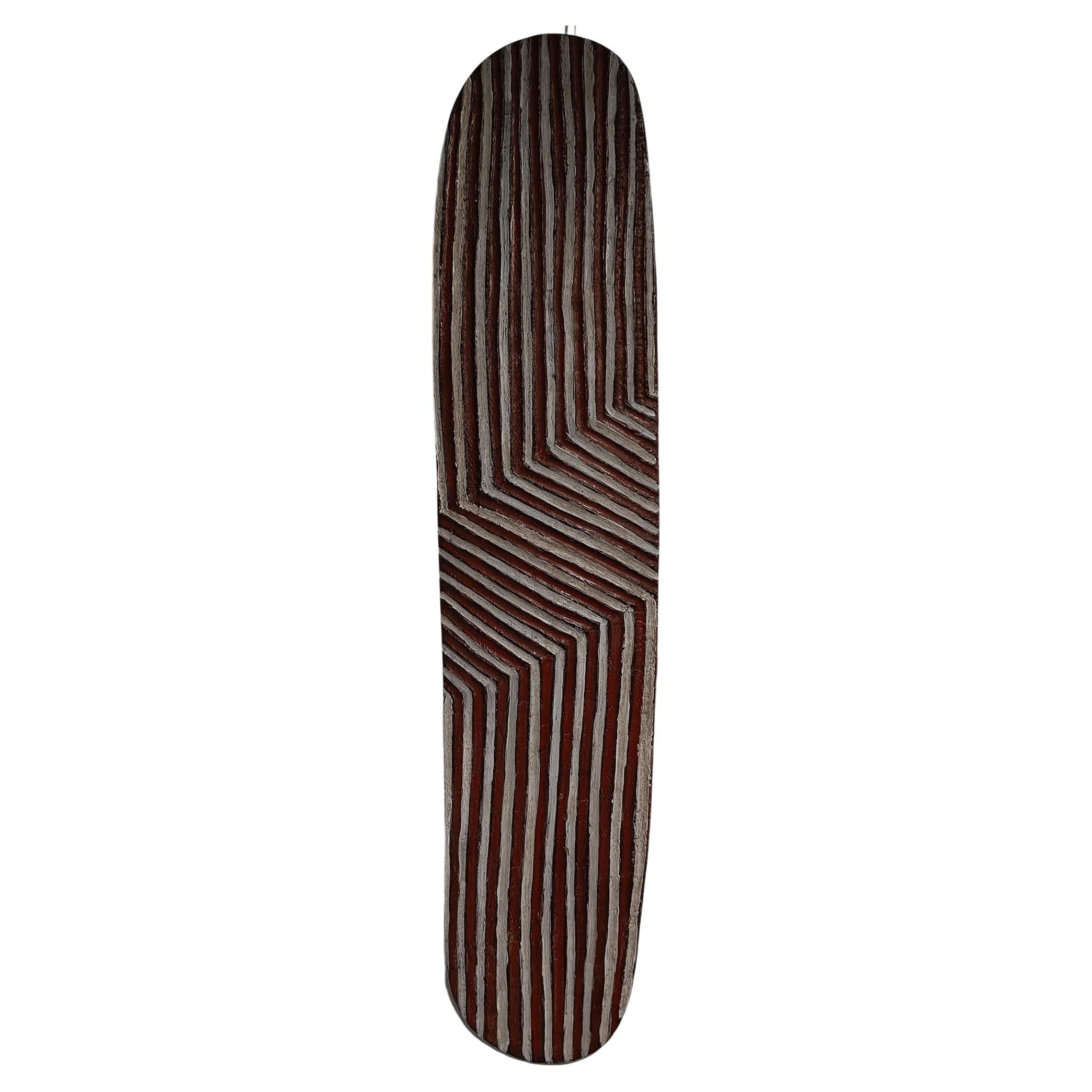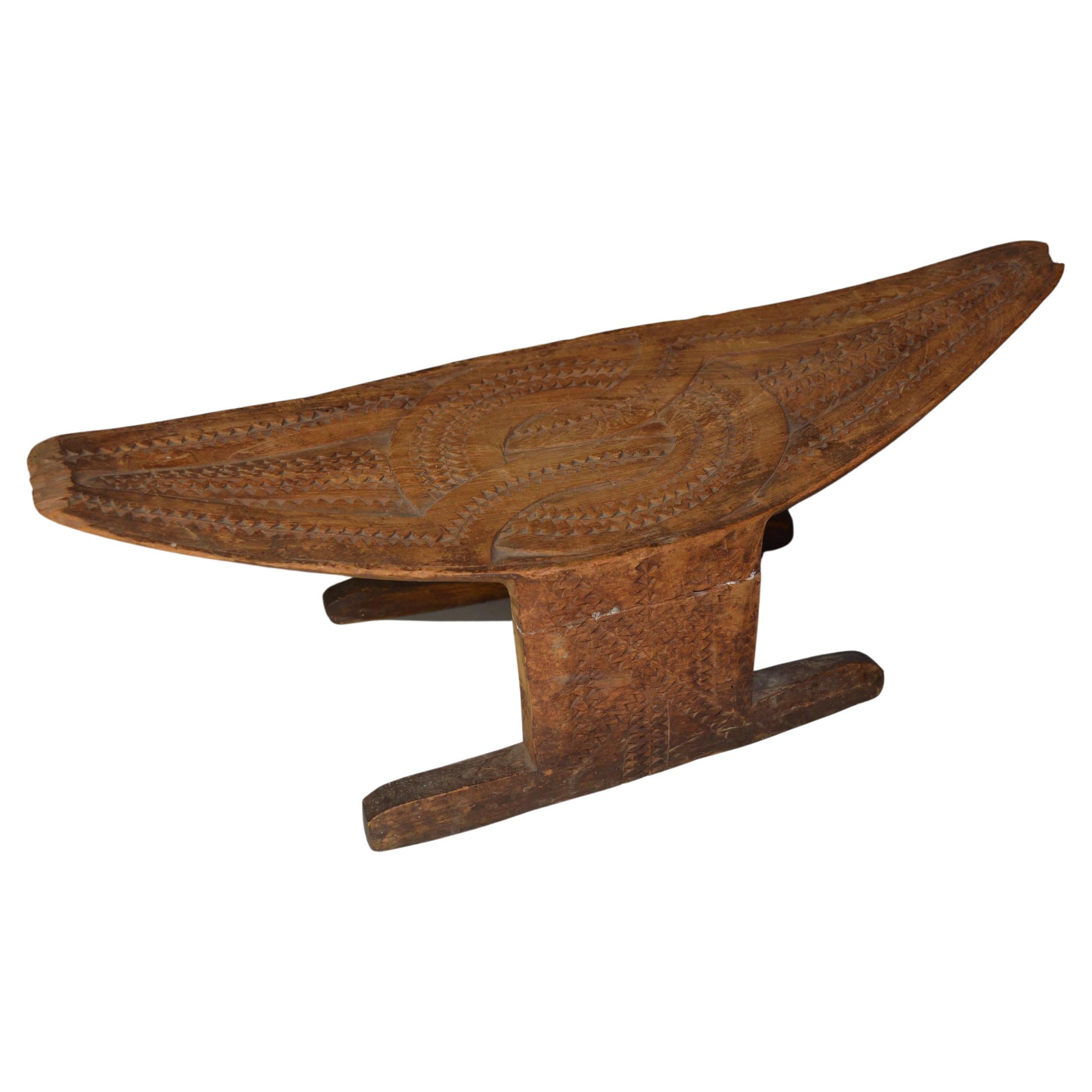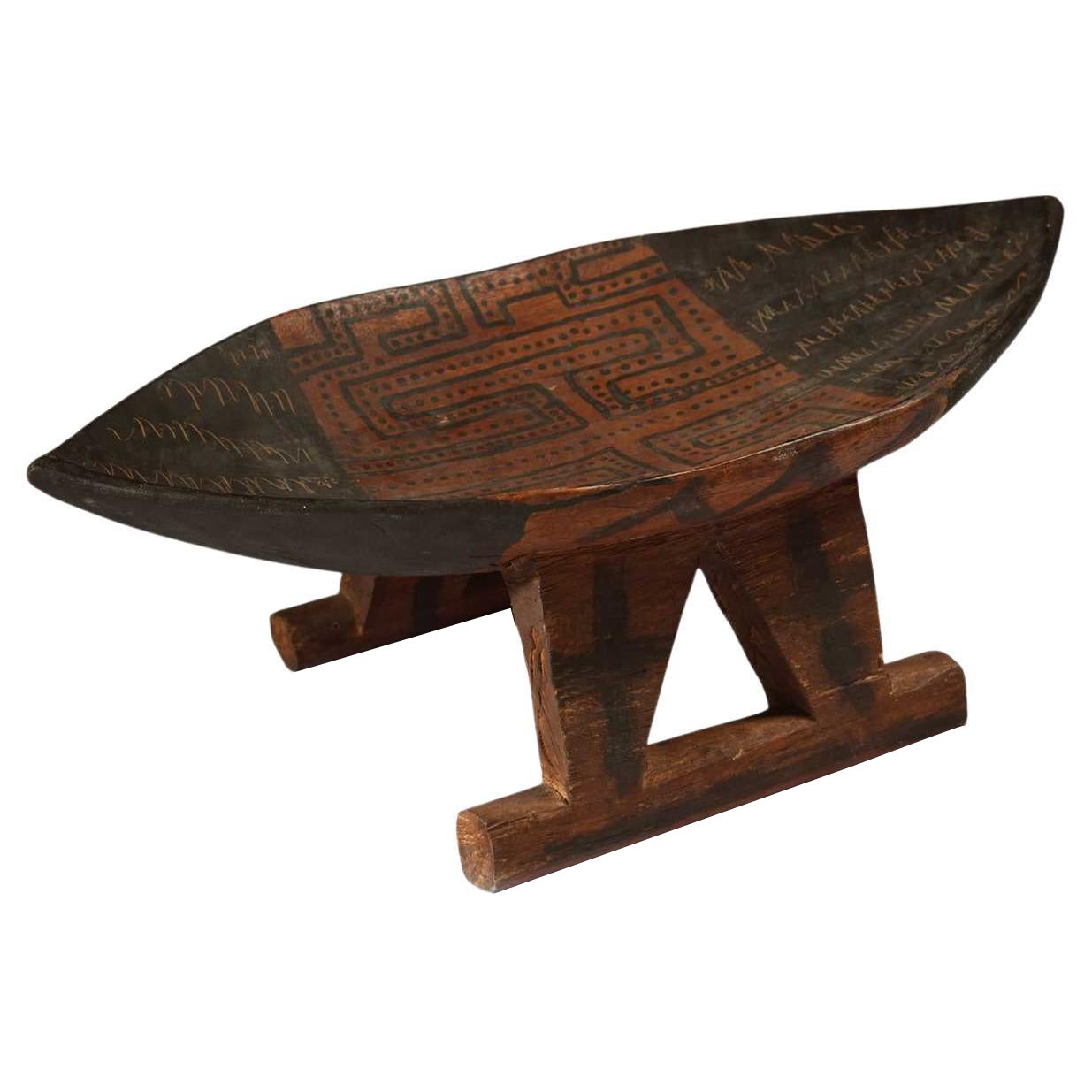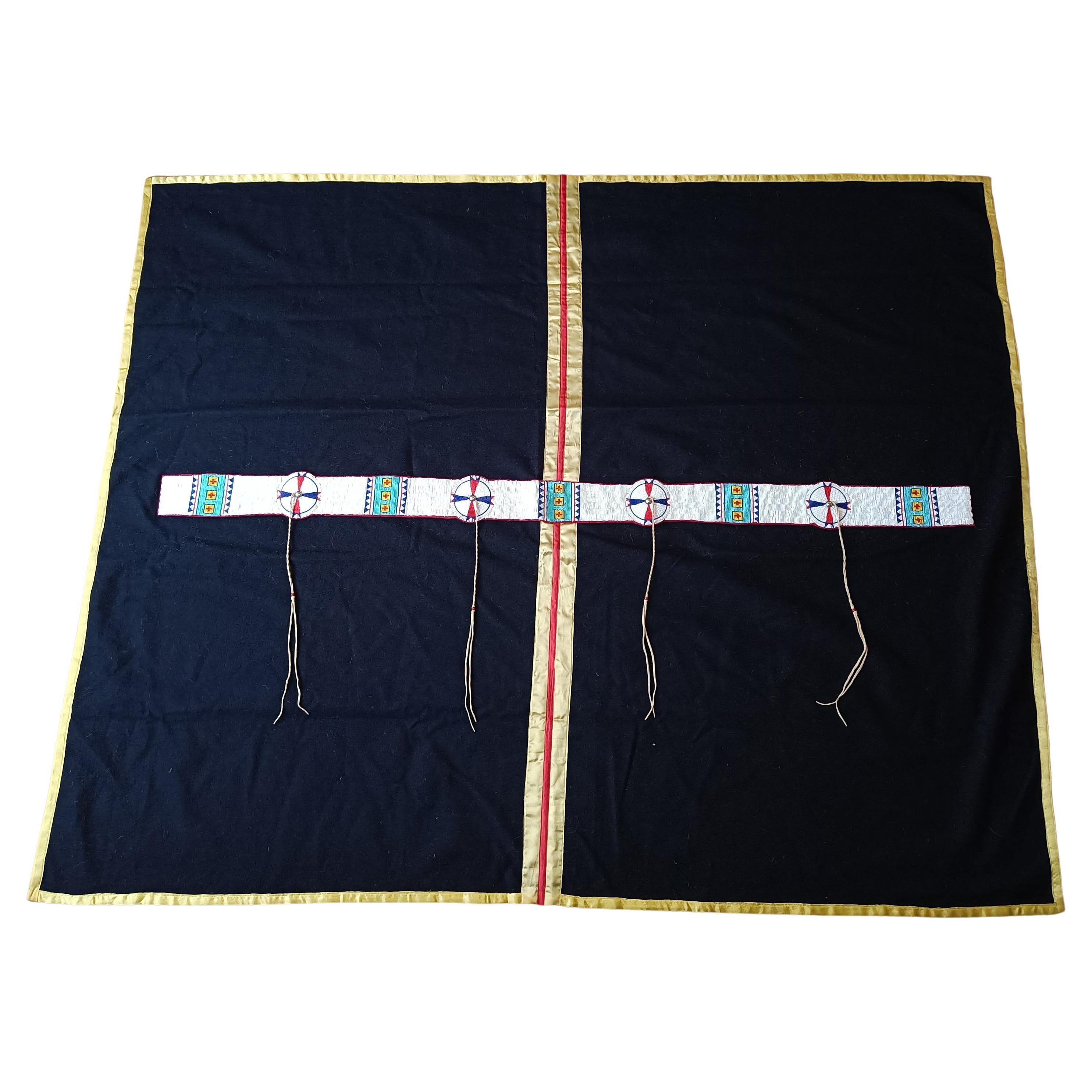Items Similar to Fine Vintage Laotian Silk Chok Weaving Interior Design Textiles
Want more images or videos?
Request additional images or videos from the seller
1 of 5
Fine Vintage Laotian Silk Chok Weaving Interior Design Textiles
About the Item
A beautiful Vintage Laotian hand woven silk chok cloth in black background with a variety of supplementary colours with detailed geometric and mythical animal designs, a stunning piece of silk weaving executed by some of the best and most skilled weavers in the world. Chok weaving is a technique where two or more different coloured threads are inserted between each row of warp thread. These are inserted by hand, so it’s akin to embroidery or carpet weaving.
Size 80 x 18 inches 200 x 45 cm approx.
Period 1970s
About weaving in Laos
The evolution of weaving in Laos, which emerged from the cultural contact between different ethnic groups, has created some of the most intricate and stunning textiles to come from the simple floor loom. For more than 40 years following World War II, Lao weaving all but disappeared. Within a few short years, Lao textiles, in particular the Lao Tai people's supplementary weft weaving, travelled from the brink of extinction to what is considered by collectors and connoisseurs to be amongst the finest textiles in the world.
Silk production, dying and weaving reached Laos with the arrival of the Tai Kadai people from Yunnan in today’s China, around 1,200 years ago. As they travelled through the region, they encountered the indigenous Mon-Khmer people who were already weaving other types of fabric, mostly raw cotton and hemp.
In Lao-Tai textiles, there is an image of great beauty, power, and mystery. It is an
image known to weavers as the pii nyak, “the great or evil spirit” The design of
the image in textiles has two parts: a diamond-shaped head, known as a gaap
pattern, that has upright crests, eyes, and earrings, and two arm-like “appendages”
that derive from the serpent, the Lao ngueak or naak (naga). These limbs come in two
varieties: either the coiled tail of the serpent asleep, or the upright head of the serpent
in motion. The “great spirit” figure appears in a number of different textiles. We find it
woven into head cloths, worn here by a weaver from Xam Tai and used for
everyday, ceremonial, or shamanic wear; into body wraps, worn here by a woman in
Muang Vaen and used by parents to carry children, or by men and women
when they go traveling; into shamanic healing cloths, shown here by a healing shaman
(maw mon) from a village outside of Xam Tai and into Buddhist door curtains
or temple hangings . In each of these cases, the pii nyak, itself once an evil spirit
but now embedded in a textile, provides protection from other evil spirits and, thereby,
ensures the prosperity of the user.
- Dimensions:Height: 78.75 in (200 cm)Width: 17.72 in (45 cm)Depth: 0.08 in (2 mm)
- Materials and Techniques:
- Place of Origin:
- Period:
- Date of Manufacture:Mid-20th Century
- Condition:Wear consistent with age and use.
- Seller Location:London, GB
- Reference Number:1stDibs: LU6460231402632
About the Seller
4.8
Vetted Seller
These experienced sellers undergo a comprehensive evaluation by our team of in-house experts.
Established in 1985
1stDibs seller since 2022
55 sales on 1stDibs
Typical response time: 15 hours
- ShippingRetrieving quote...Ships From: London, United Kingdom
- Return PolicyThis item cannot be returned.
More From This SellerView All
- Aboriginal Fine Antique Wunda Shield Australia Tribal Art Interior DesignLocated in London, GBFine large Antique Aboriginal Wunda shield in hard wood carved on both sides with a highly artistic Zigzag Geometric fluted design colored with red and and white pigment & paint. The...Category
Early 20th Century Australian Tribal Art
MaterialsHardwood
- Vintage Carved Suriname Stool Tribal Interior Design Home DecorationLocated in London, GBA fine vintage carved Suriname stool with geometric carved decoration, Tribal South Latin American Antiques Suriname South America Measures: 18 cm hei...Category
Antique 15th Century and Earlier Surinamer Antiquities
MaterialsWood
- Vintage Carved Pained Suriname Stool Tribal Interior Design Home DecorationLocated in London, GBA fine Vintage carved pained Suriname stool with painted and scratched decoration, Tribal South Latin American Antiques Suriname South Americ...Category
Mid-20th Century Surinamer Antiquities
MaterialsWood
- Vintage Native American Plains beaded Blanket Rug Interior design collectiblesLocated in London, GBLarge Vintage Native American beaded Blanket Fine large wool blanket with finely executed beadwork strip on buckskin with satin detail ...Category
Vintage 1970s American Native American Objects
MaterialsWool, Satin, Beads
- Aboriginal Carved Wood Woomera Australia Tribal Art Interior DesignLocated in London, GBFine Large Aboriginal woomera carved in hard mulga wood with pleasing curved chip carved interior with gum handle and possum tooth barb Beautiful p...Category
Early 20th Century Australian Tribal Art
MaterialsHardwood
- Antique Aboriginal Carved Wood Boomerang Australia Tribal Art Interior DesignLocated in London, GBVery Good Antique Aboriginal carved wood Boomerang Australia Carved with fluted design on one face chip design on back, red pigment Central desert ...Category
Early 20th Century Australian Tribal Art
MaterialsHardwood
You May Also Like
- Vintage Berber Moroccan Ourika Valley Eye Design Flat-Weave RugLocated in Milan, ITWoven with natural, undyed wool, flat-weaves such as the one illustrated here are characteristic of the Berber people located in the Ourika Valley, in the Moroccan High Atlas region....Category
Vintage 1940s Moroccan Tribal Moroccan and North African Rugs
MaterialsWool
- Woven Floral Vintage TextileLocated in San Diego, CATextile Art This is a beautiful remnant of a vintage floral textile. The design is woven on lightweight cotton and runs lengthwise as in the fi...Category
20th Century Unknown Tribal Art
MaterialsCotton
- Indian Phulkari Wedding Textile, Silk & Cotton Embroidery, Punjab 1900sLocated in Jimbaran, BaliThis strikingly coloured Phulkari is from Punjab, India. It was hand-crafted from silk and cotton, with silk being used for the embroidery. Phulkari’s are a form of wedding shawl and...Category
Early 20th Century Indian Other Textiles
MaterialsCotton, Silk
- Indian Phulkari Wedding Textile, Silk & Cotton Embroidery, Punjab 1900sLocated in Jimbaran, BaliThis strikingly coloured Phulkari is from Punjab, India. It was hand-crafted from silk and cotton, with silk being used for the embroidery. Phulkari’s are a form of wedding shawl and...Category
Early 20th Century Indian Other Textiles
MaterialsCotton, Silk
- Indian Phulkari Wedding Textile, Silk & Cotton Embroidery, Punjab, 1900sLocated in Jimbaran, BaliThis strikingly coloured Phulkari is from Punjab, India. It was hand-crafted from silk and cotton, with silk being used for the embroidery. Phulkari’s are a form of wedding shawl and...Category
Early 20th Century Indian Other Textiles
MaterialsCotton, Silk
- Late 19th Century Silk Ikat Uzbekistan Tribal WeavingLocated in New York, NYGorgeous handwoven silk Ikat weaving in rich magenta, gold and purple color, circa late 19th-early 20th century, Uzbekistan, Central Asia, on the ancient...Category
Antique Late 19th Century Uzbek Tribal Tribal Art
MaterialsSilk
Recently Viewed
View AllMore Ways To Browse
Interior Design Vintage Furniture
Retro Interior Design
Vintage Interior
Interior Vintage
Retro Mid Century Interior Design
Fine Vintage
Fine Art Of Design
Vintage Interior Design
Weaving Art
Weave Art
Vintage Art Object
Retro Interior Doors
Mid Century Interior Door
Vintage Woven Art
Silk Weave
Silk Weaving
Go Silk
Vintage Weave Interiors





